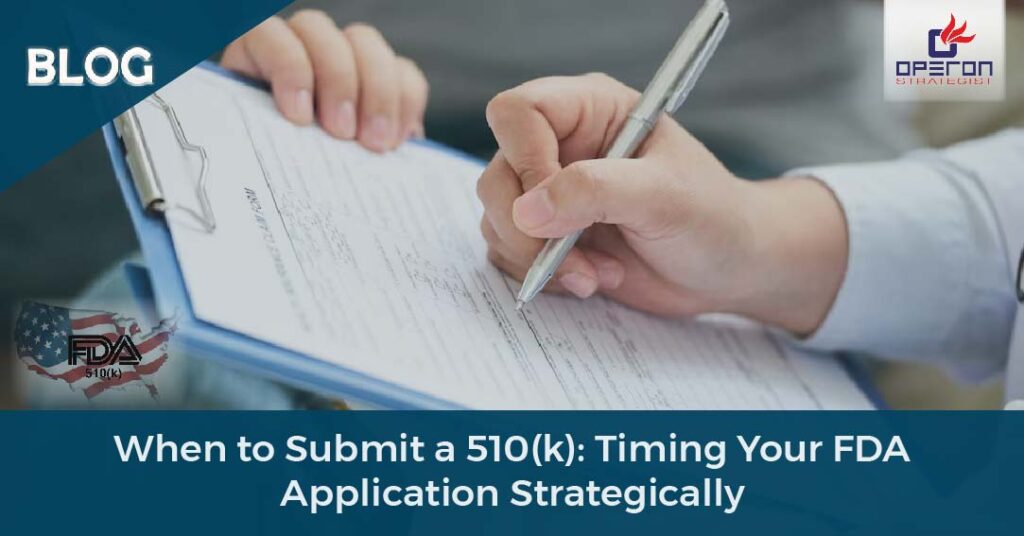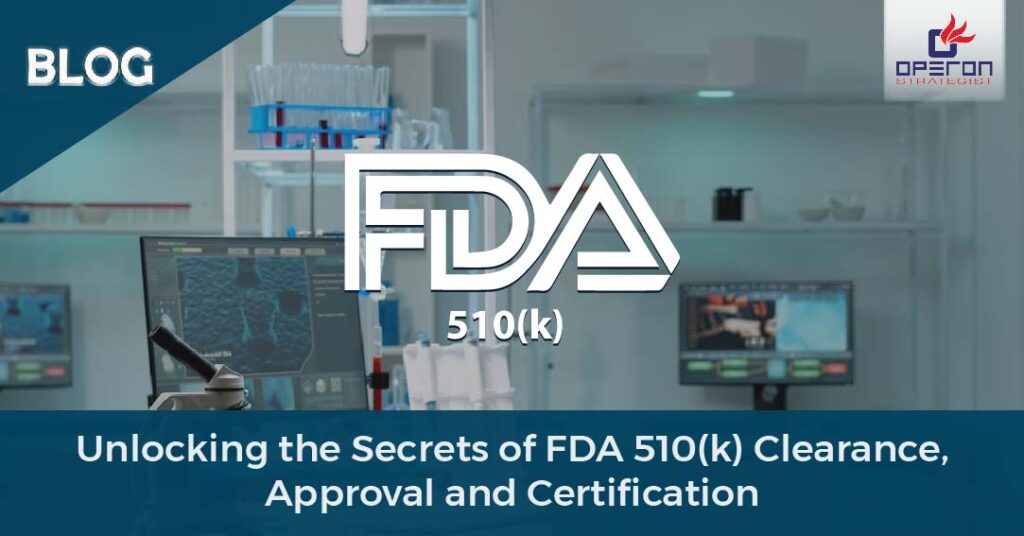
For medical device manufacturers aiming to enter the US market, the timing of a 510(k) submission is as critical as its content. With new updates from the FDA, mandatory eSTAR submissions, and ongoing resource challenges at the agency, strategically timing your submission can mean the difference between a smooth clearance and costly delays. This guide will help you understand when and how to submit your FDA 510(k) application for maximum efficiency.
Timely & Accurate Filings: Vital for Device Manufacturers
- FDA Review Backlogs: Due to staff shortages and increased submission volumes, the FDA may take longer than the typical 90-day goal for review.
- Mandatory eSTAR: Since October 1, 2023, FDA requires eSTAR for most 510(k) submissions. While this standardizes applications and reduces errors, it also adds new requirements for preparation.
- Market Entry Pressure: With fast-moving competitors, every month of delay could mean lost market share.
- Efficient Review: Early submissions grant the FDA ample time for thorough review, reducing rushed assessments and potential oversights.
- Swift Approval: Well-timed submissions lead to faster approvals, expediting your product’s market introduction.
- No Delays: Accuracy prevents rejections or additional requests, ensuring a smooth approval process without unnecessary delays.
- Clear Documentation: Accurate data minimizes back-and-forth with the FDA, streamlining the review.
- Risk Mitigation: Precision reduces safety concerns and misunderstandings during review.
- Competitive Edge: Timely, accurate approvals help you outpace competitors and capture a larger market share.
What is US FDA 510(k) Application?
The US FDA 510(k) submission is a premarket requirement for all medical devices in the US. It demonstrates equivalence to an existing legally marketed device, showing safety and effectiveness. It’s primarily for moderate-risk class II devices, but some class I and class III devices might also need it.
Key Differences Between US FDA 510(k) and Premarket Approval (PMA) Process:
| US FDA 510 (k) | Premarket Approval (PMA) Process |
Purpose | Demonstrates new device similarity to an existing one | Assesses high-risk class III devices’ safety and effectiveness |
Requirement | Needed for all moderate-risk class II devices | Mandatory for devices without a predicate or with high risk |
Evidence | Relies on comparison to the predicate, often without clinical trials | Requires extensive clinical data from studies |
Choosing the Right Path:
- US FDA 510(k): For Medical devices with similar counterparts and lower/medium risk.
- PMA: For novel devices and those with higher risks.
When is a US FDA 510(k) Typically Required?
- Introducing a device to the US market for the first time.
- Changing the indications for use of a previously cleared device.
- Making significant modification(s) to a previously cleared device.
Need More Clarity on When to Submit a US FDA 510(k)?
Medical Device Classification as It Relates to 510(k)s:
Classifications | Risk | Level of Regulatory Control |
Class I | Minimal | General Controls |
Class II | Medium | General Controls and Special Controls (US FDA 510 k) |
Class III | High | General Controls and Premarket Approval |
- Deciding if your medical device needs a US FDA 510(k) submission hinges on factors. Generally, medium-risk devices in the US market lean towards 510(k). You prove your device is ‘substantially equivalent’ to an existing one (predicate) in terms of tech, safety, effectiveness, and use.
- FDA rules require 510(k) submission 90 days before marketing. This allows ample time for FDA review and clearance for the US.
Identifying Predicate Devices: Key Considerations for Manufacturers:
A predicate device is a US FDA-approved device that you compare your new medical device to, showing it is safety and efficacy in comparison to the predicate device, considering their intended use and technology. This assessment is called “substantial equivalence.”
Being substantially equivalent doesn’t mean the new device has to be the same as the predicate device.
How to Identify a Predicate Device?
The FDA assigns a three-letter product code for each device class. The US FDA 510(k) database has info on all 510(k)-cleared devices. With the code, you access lists of products, companies, and competitor names. This helps analyze and compare, narrowing down a predicate device for your needs.
Consider these factors when choosing the predicate device(s):
- Intended Use: Ensure the medical new device’s purpose is like the predicate’s. For instance, if it’s for heart monitoring, the predicate should also be a heart monitor.
- Technological Match: The predicate’s design, materials, and operation should closely resemble the new device.
- Current Tech: Choose a predicate that showcases up-to-date medical technology.
US FDA 510(k) Change Guidance:
US FDA 510(k) change guidance outlines the regulatory pathway for making modifications to medical devices that have received 510(k) clearance. This guidance helps manufacturers understand when a new US FDA 510(k) submission is necessary and provides strategies for streamlining post-market changes under the existing US FDA 510(k) clearance.
Navigating the Latest US FDA Guidelines for 510(k) Changes:
Manufacturers must navigate the most recent FDA guidelines for making changes to medical devices that have already received 510(k) clearance. These guidelines provide detailed instructions on when to submit a new 510(k) and when a Letter to File (LTF) might be appropriate for documenting certain changes.
When to submit a US FDA 510(k) for a change in an existing device?
Knowing when to submit a 510(k) isn’t just for new devices entering the market. Sometimes, changes to devices already in use require a new 510(k) submission.
Here are three types of US FDA 510(k) submissions:
Traditional | New Device; Never Cleared Before; Undergoing some significant changes |
Special | Changes to already cleared device |
Abbreviated | Showing substantial equivalence to a recognized standard |
In Summary-
- Traditional US FDA 510(k) Route: Use this when a major device update requires new performance data, just like for a completely new device.
- Special US FDA 510(k) Route: Opt for this if the change is significant but doesn’t need extra performance data, such as altering labeling or packaging without changing the device.
- Significant Change: If a change could impact safety, effectiveness, or device integrity post-use, it warrants a new 510(k) submission.
Understanding the Distinction Between New 510(k) and Letter to File (LTF) Submissions:
New US FDA 510(k) Submission:
When: If you have a new device or made big changes to an existing one.
What: You need to prove it’s safe and like devices already on the market.
Why: FDA checks this before you can sell your device.
Examples: Introducing a brand-new device or making big changes that could impact safety, effectiveness, design, or use
Letter to File (LTF) Submission:
When: If you made small changes that don’t affect safety.
What: You just need to write down the changes you made.
Why: This is just for your records, FDA doesn’t need to check it.
Examples: Updating packaging, labeling, or processes without changing the device’s core.
In a Nutshell:
US FDA 510(k) Submission: For big changes, like showing your new device is safe.
LTF Submission: For small changes, just write them down.
US FDA's Review and Decision Process -
Here’s a concise overview of the US FDA’s review and decision process-
Day 1: US FDA receives 510 (k) Application
By Day 7: US FDA sends Acknowledgment Letter or FDA sends Hold Letter if unresolved issues with user fees or eCopy
By Day 15: US FDA conducts Acceptance Review; FDA informs applicants if 510 (k) is accepted for substantive review or placed on RTA Hold.
By Day 60: FDA conducts Substantive Review; communicates with applicants that indicates they will proceed with interactive review or ask for additional information
By Day 90: FDA sends final MDUFA Decision on 510(k)
By Day 100: If MDUFA Decision is not reached by day 100, MDA provides missed MDUFA Decision Communication that identifies outstanding review issues.
Looking for Expert Assistance in US FDA 510k Compliance?
With our team of seasoned experts closely engaging with notified bodies and staying updated on regulatory shifts, we ensure your device remains compliant.
As your US FDA 510k compliance consultant, we guide you through:
- Identifying the right predicate device.
- Identifying testing requirements
- Evaluating substantial equivalence.
- Drafting the 510(k) technical documents file.
- Technically responding to any arising queries.
Our specialized QMS team aids manufacturers in adhering to 21 CFR part 820 QSR requirements.
Reach out to us on enquiry enquiry@operonstrategist.com or WhatsApp us (08767980322) about your queries, and we’ll respond promptly to discuss your support needs.


